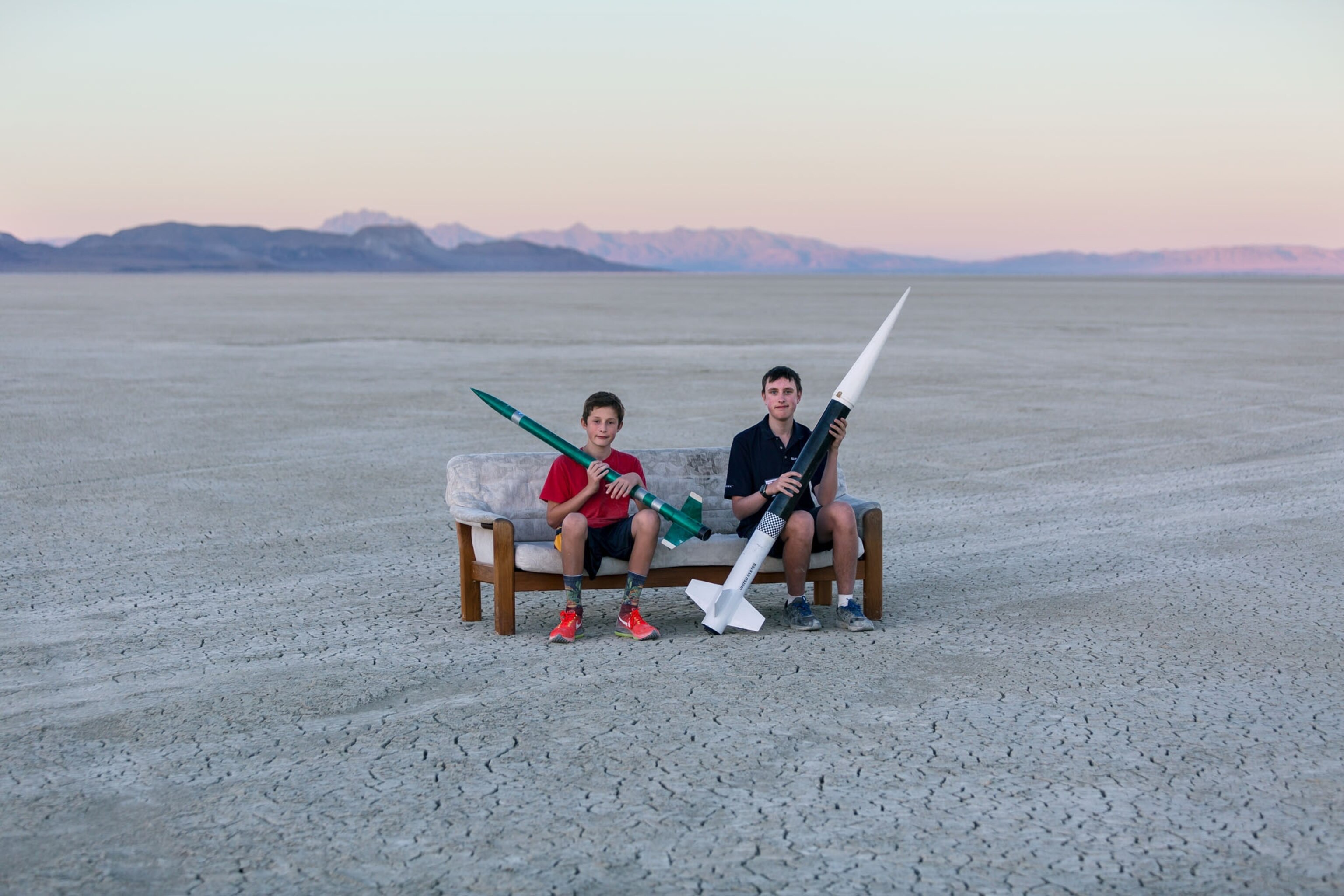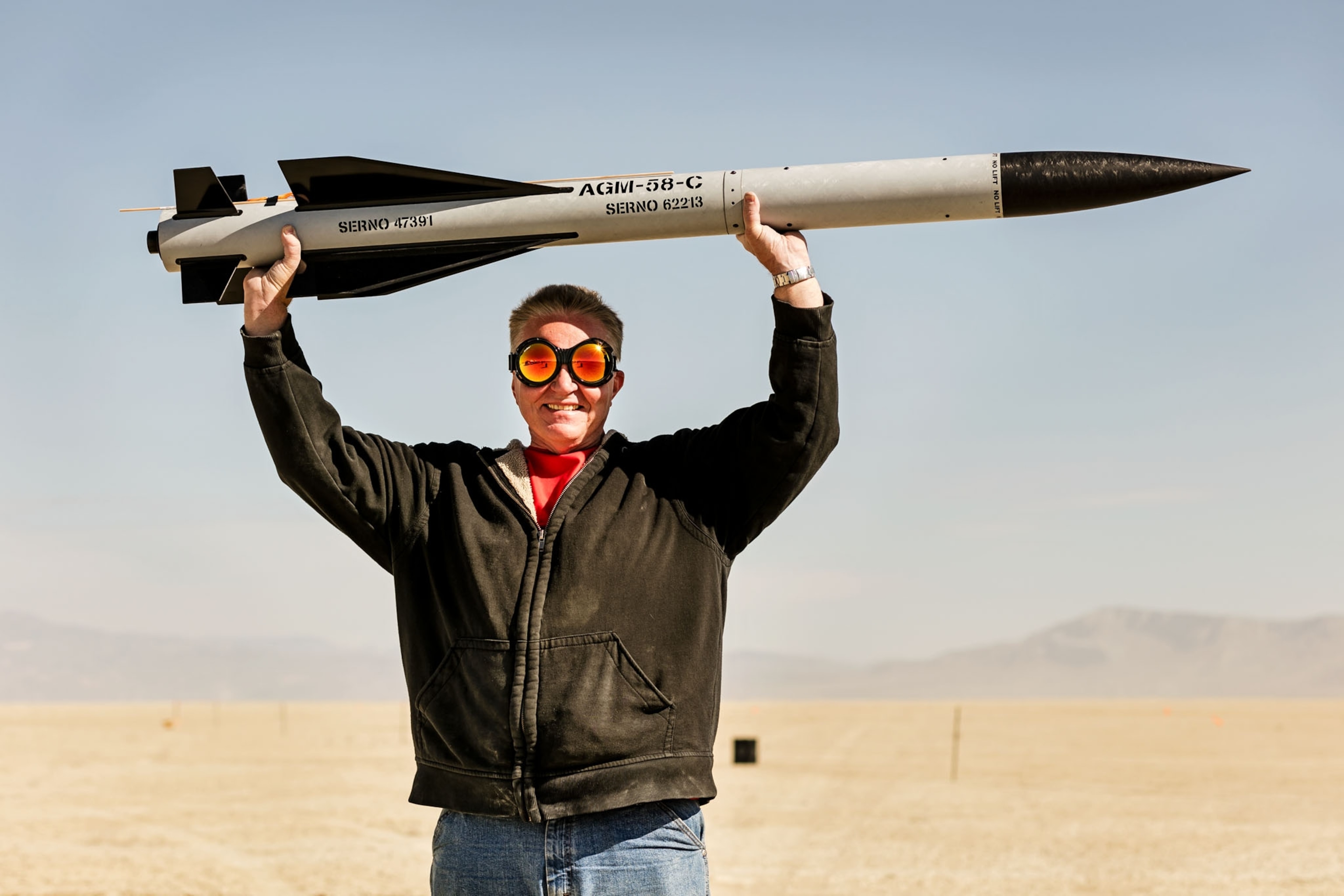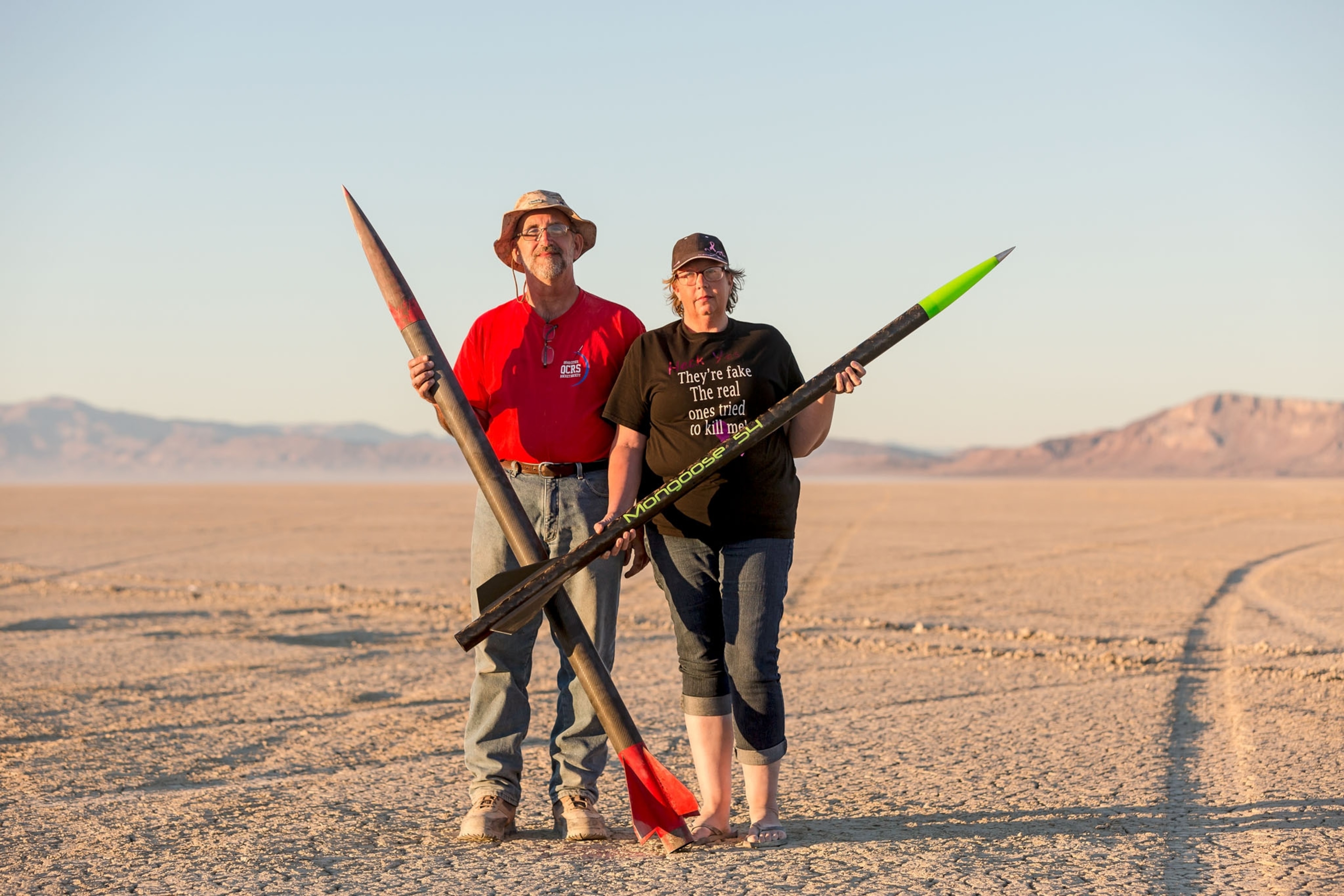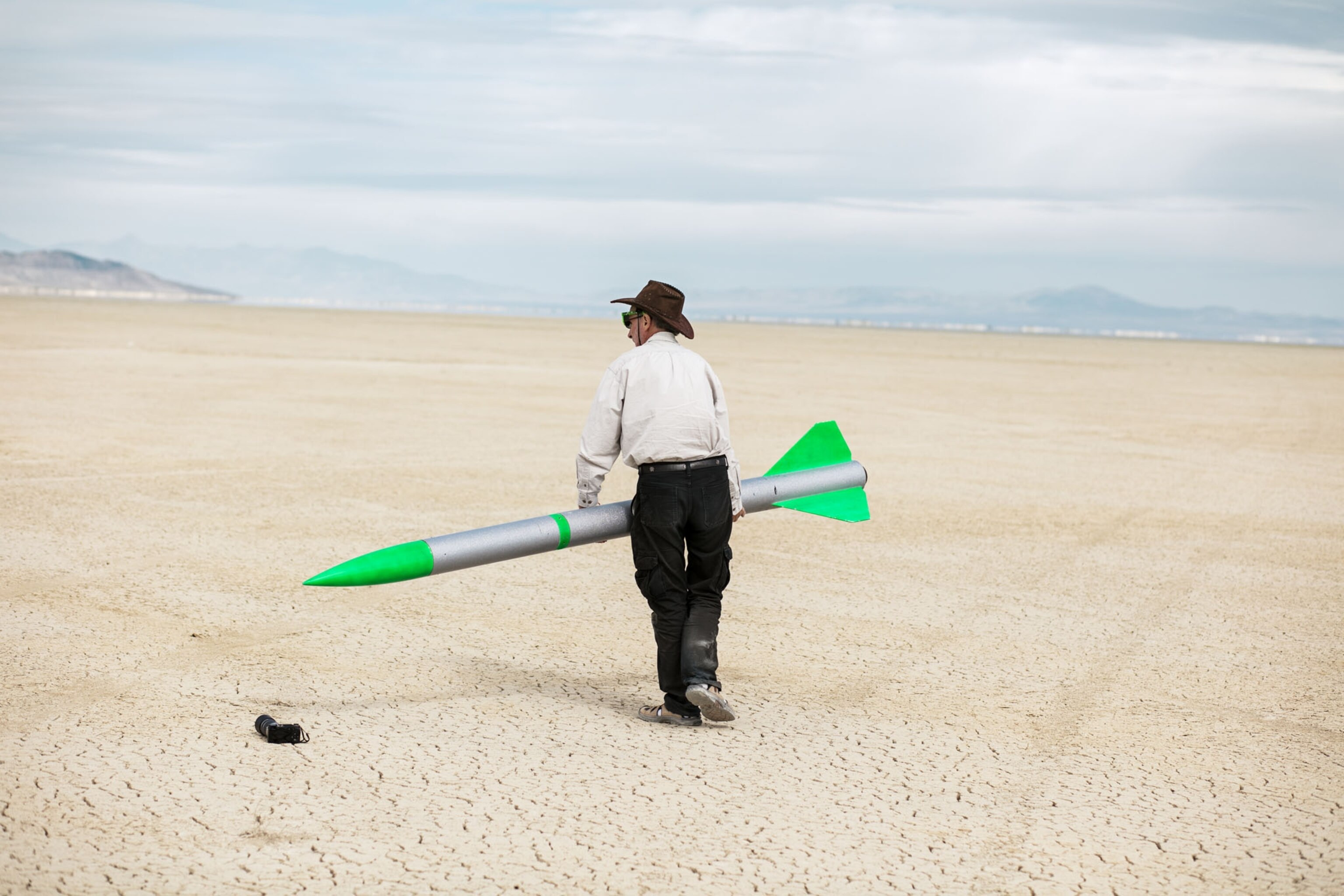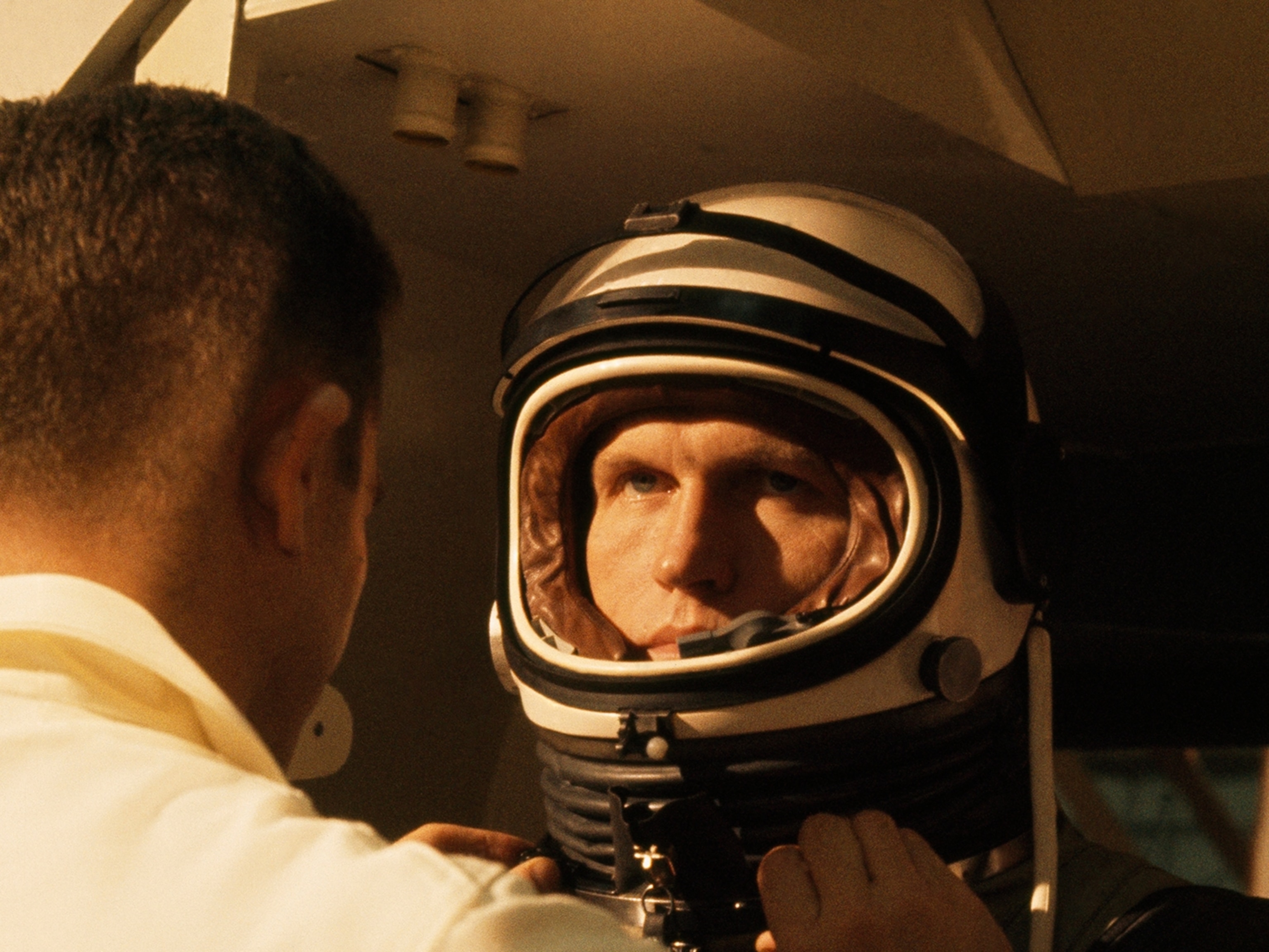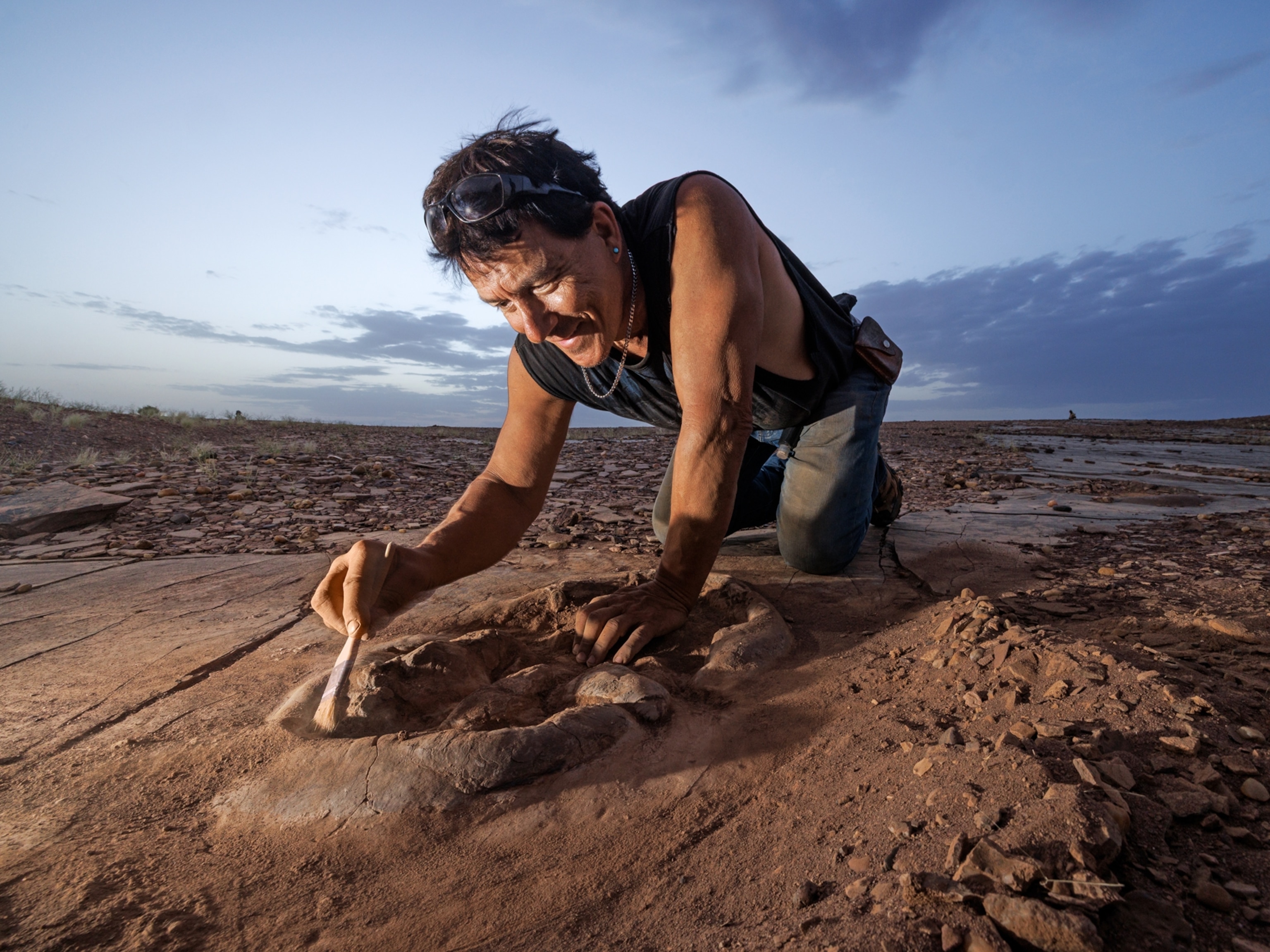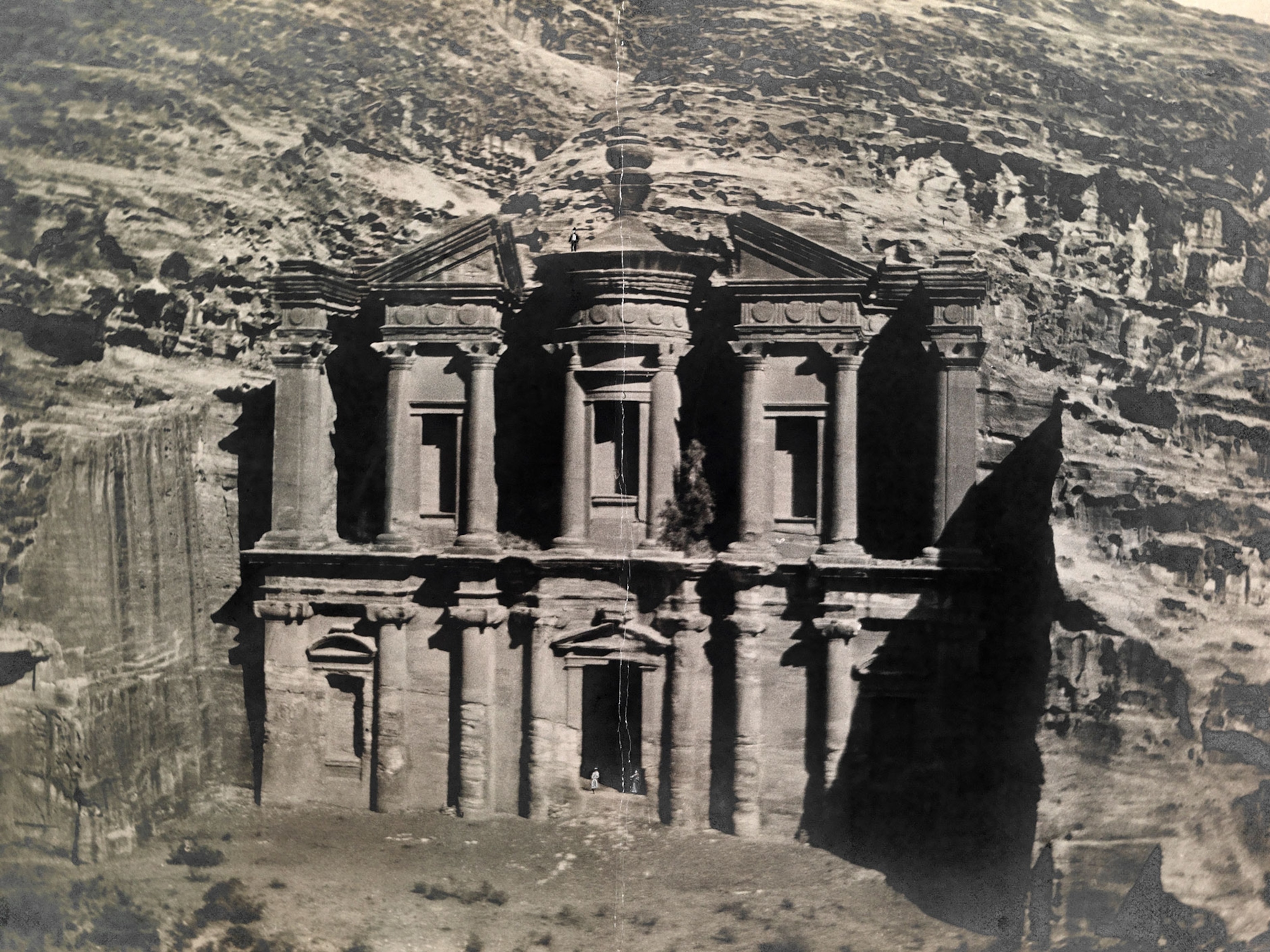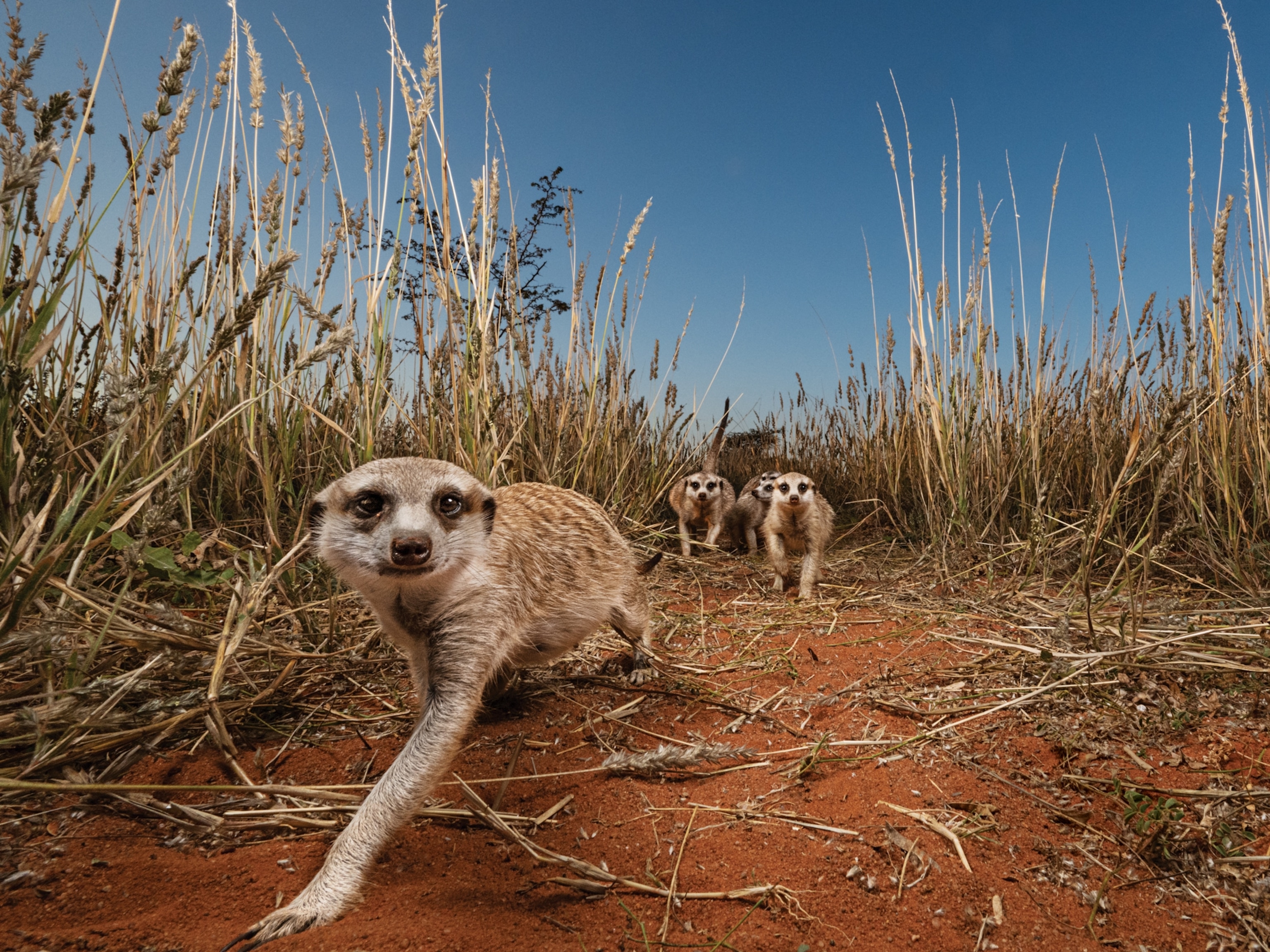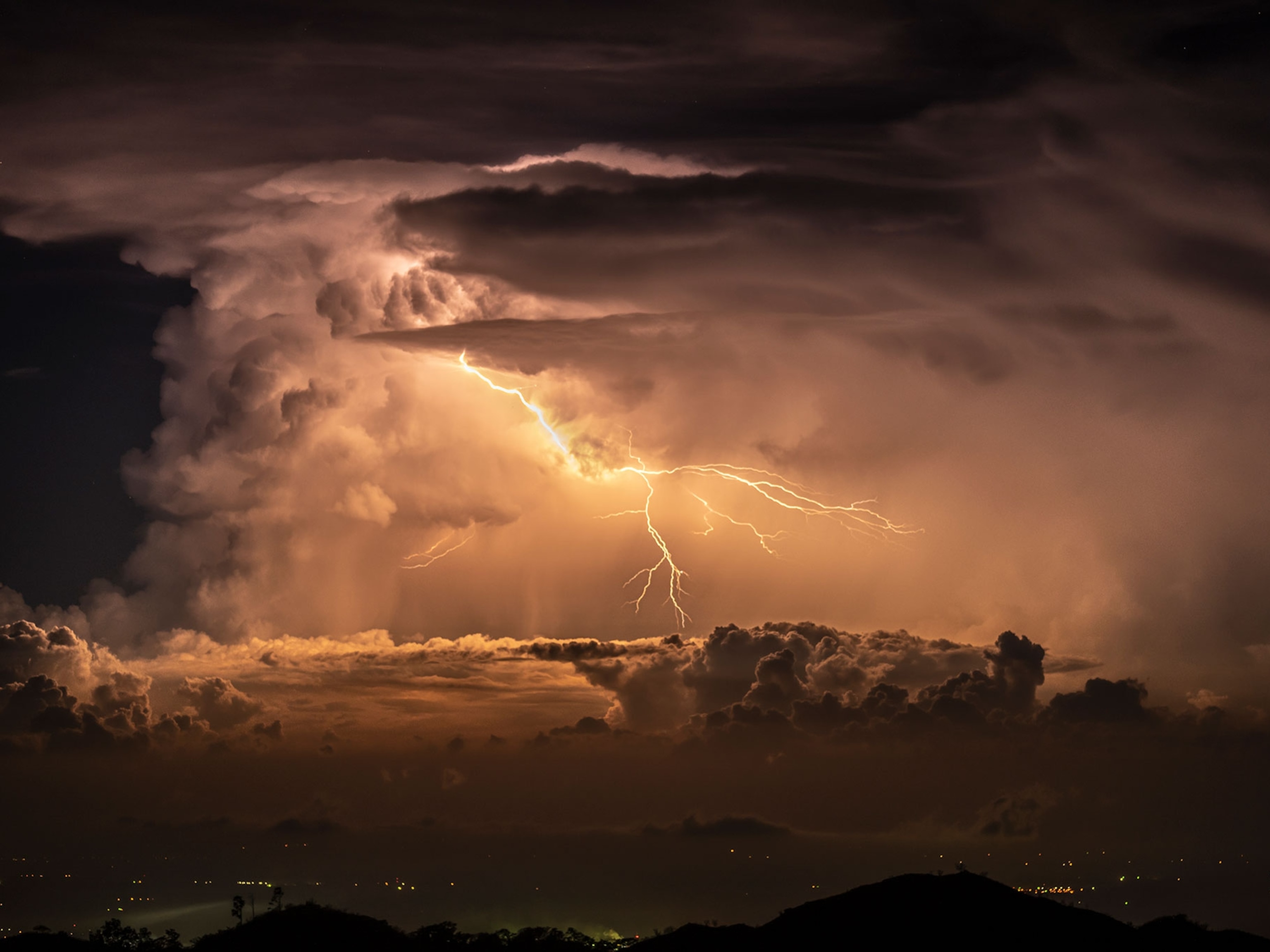Heat and swirls of dust above the cracked earth of northwestern Nevada make any sign of life look like a mirage. In the fall of 2016, photographer Robert Ormerod turned off the road and onto the dried lake bed of the Black Rock Desert in search of a rocket launch. On the horizon he could make out a hazy row of RVs—those of the attendees of a famed amateur-rocketry convention.
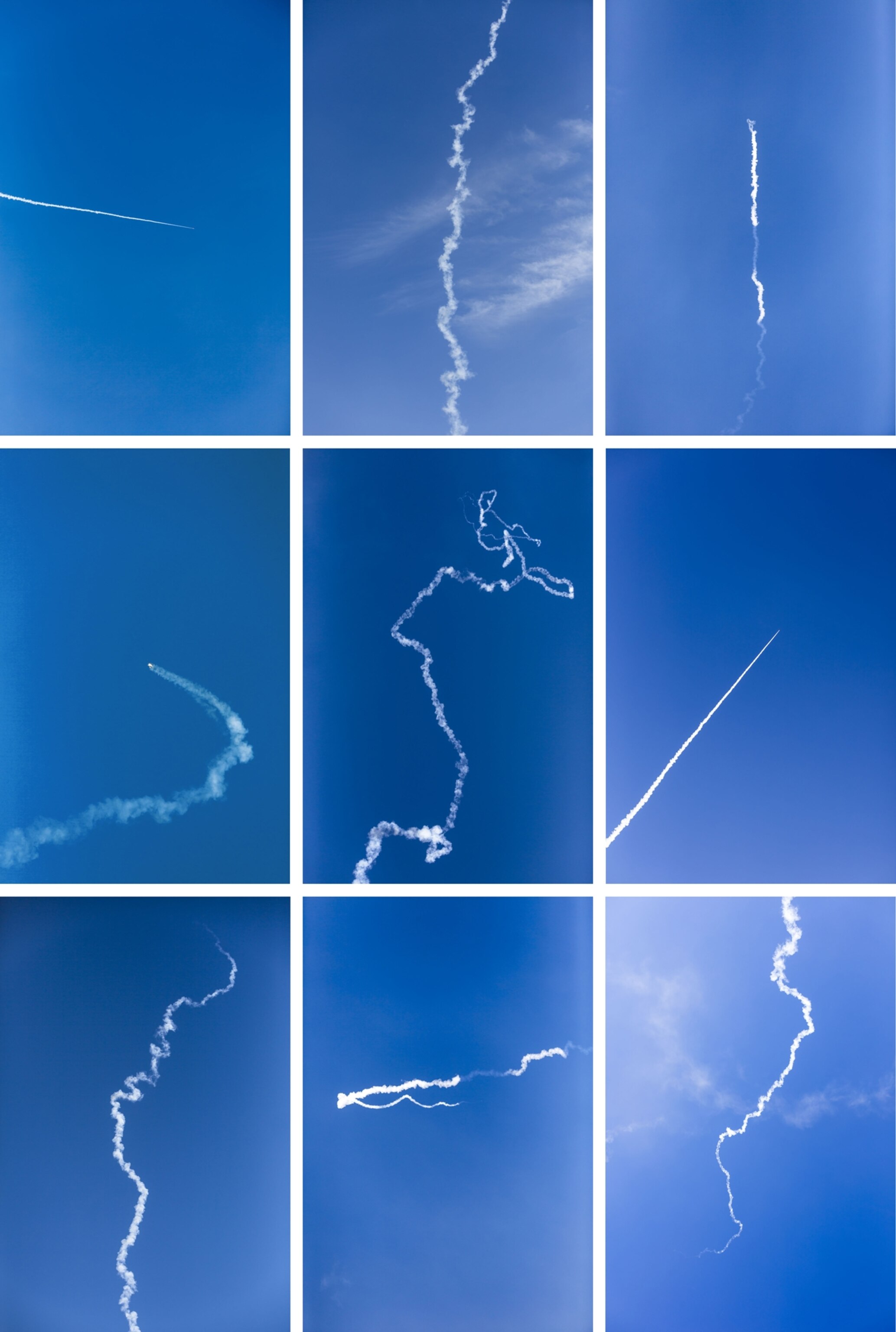
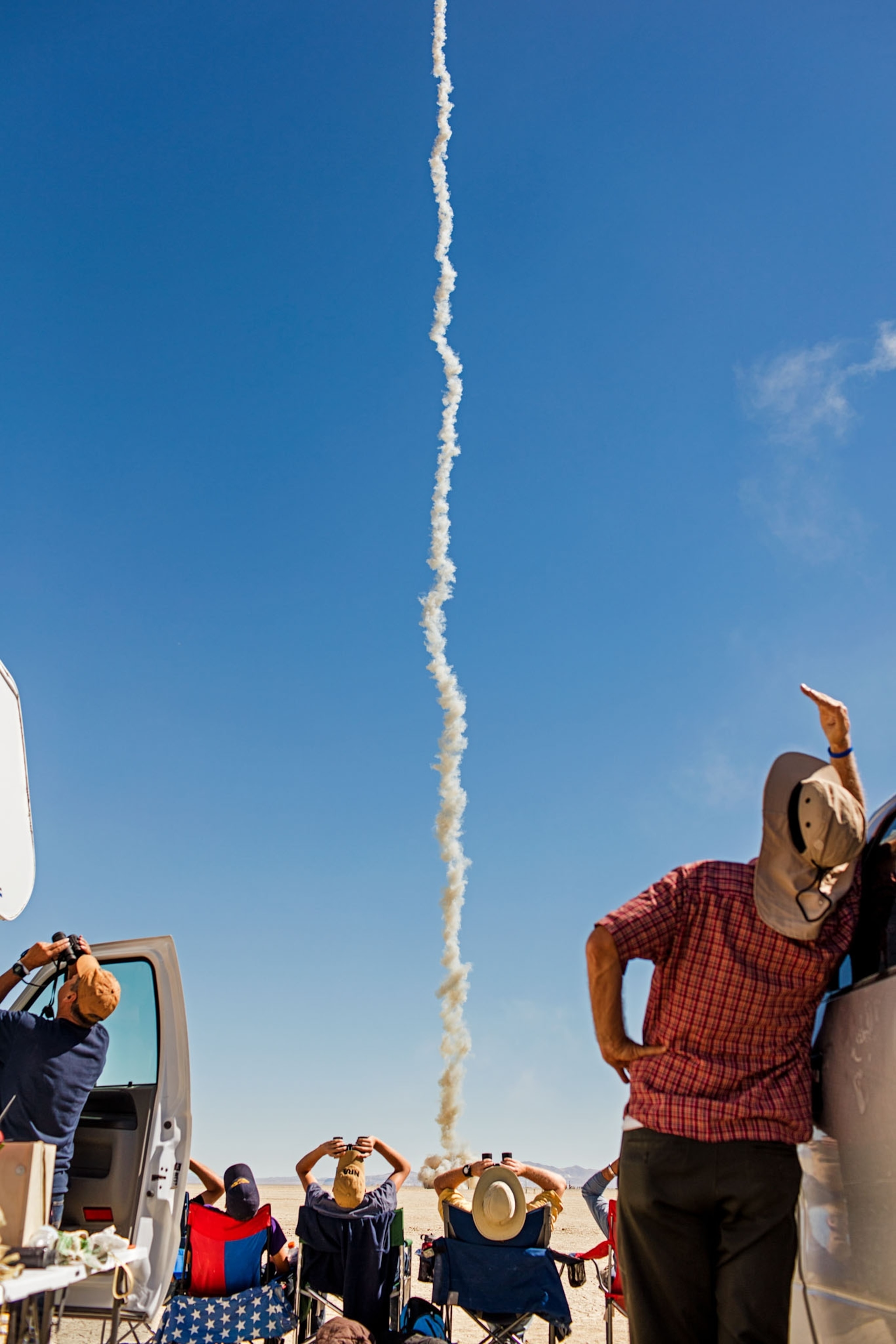
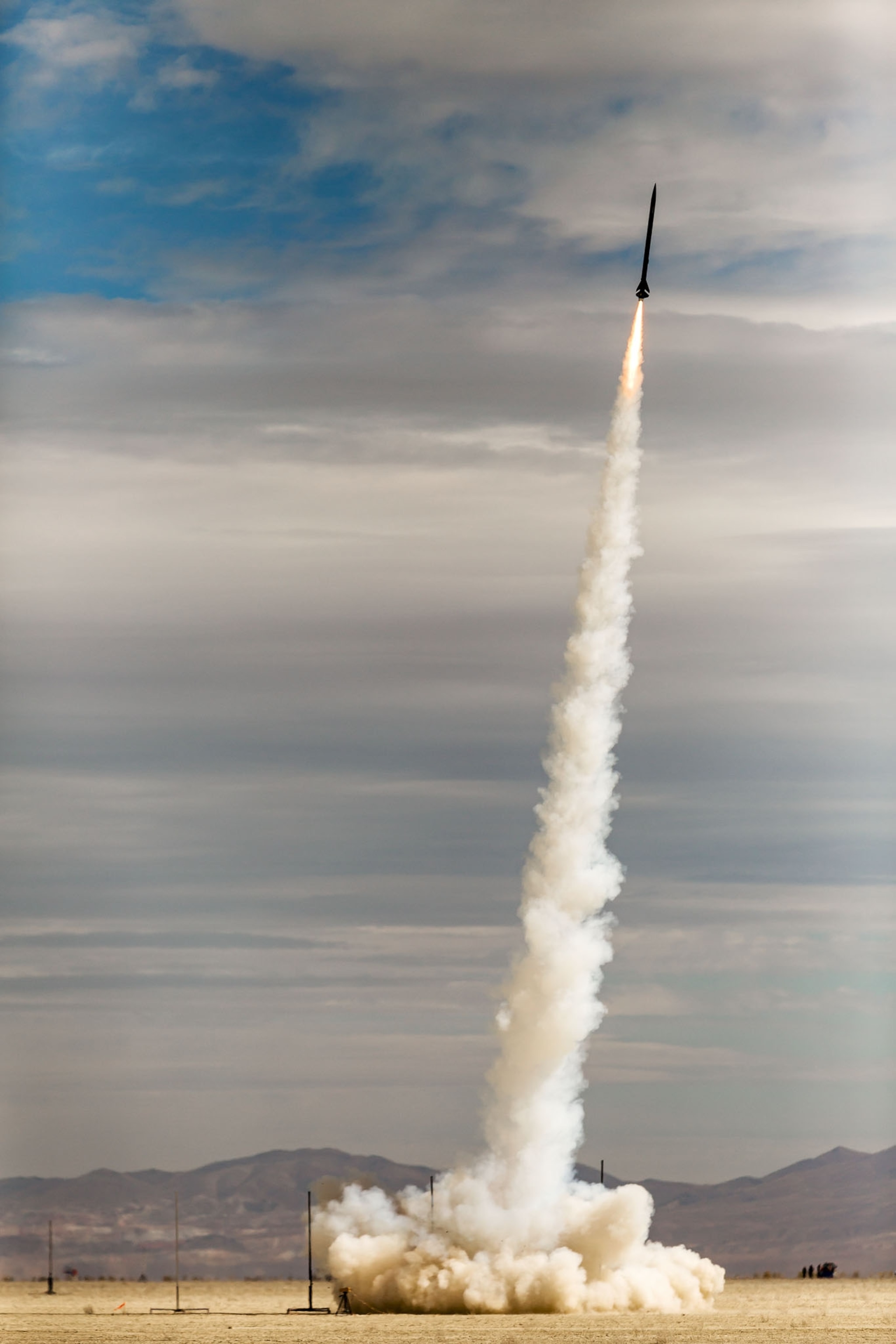
Since 1991 the Federal Aviation Administration has granted the Tripoli Rocketry Association permission to shoot rockets up to 492,000 feet (93 miles) in the air for the event. It’s one of the few times when high-altitude rockets can be safely and legally launched, so 100 to 200 hobbyists gather annually to test their creations. Tripoli calls the event “a venue for projects that should NOT be flown publicly due to safety and legal restrictions.” In other words, don’t try this at home.
One engineer installed a GoPro camera on his rocket; he showed Ormerod pictures it had captured high in the sky. Others get creative—one rocket is shaped like a bottle of Jägermeister. From the control center comes a countdown: 5, 4, 3, 2, 1. The rockets blast off, then gently float back to Earth under parachutes—if they don’t malfunction.
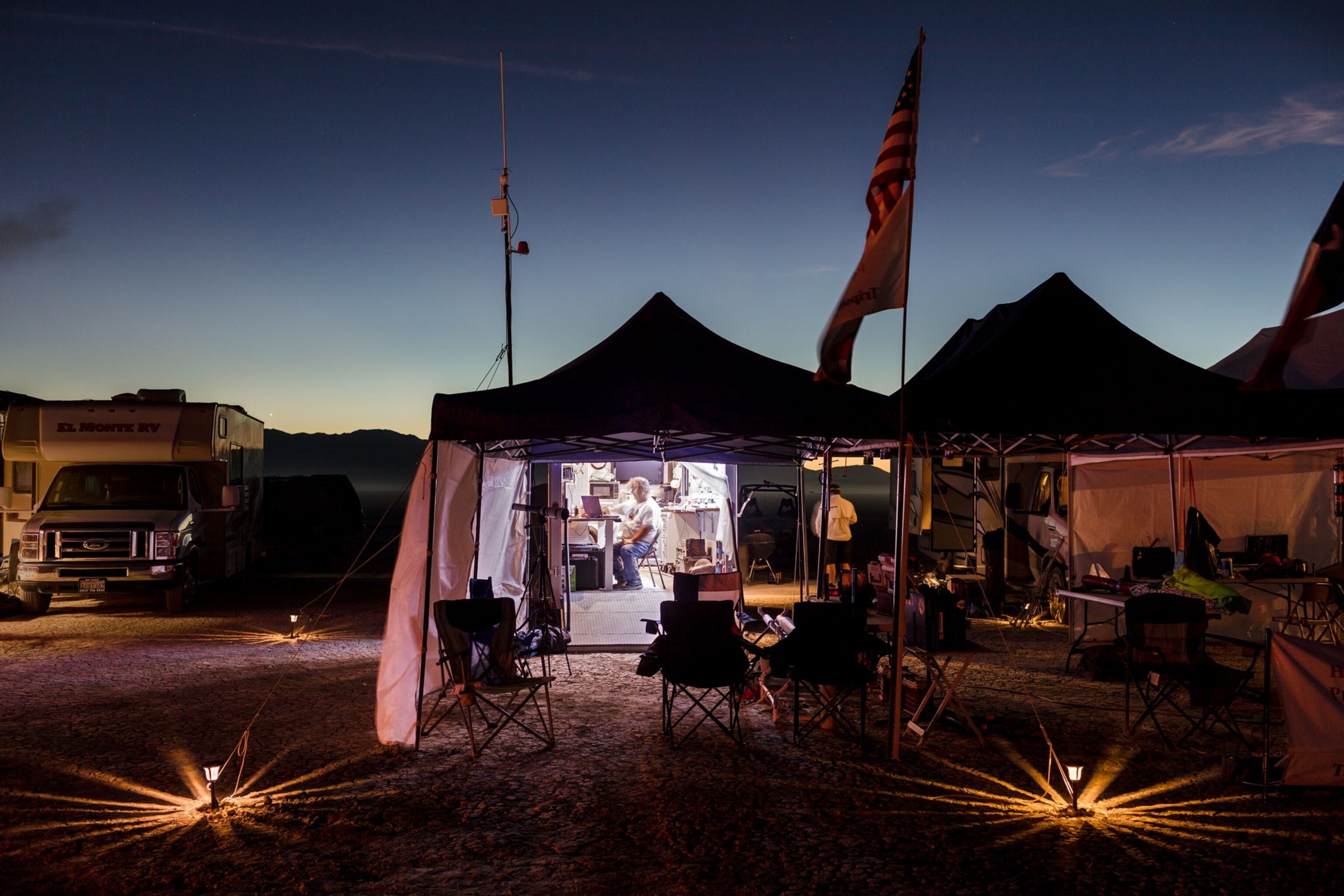
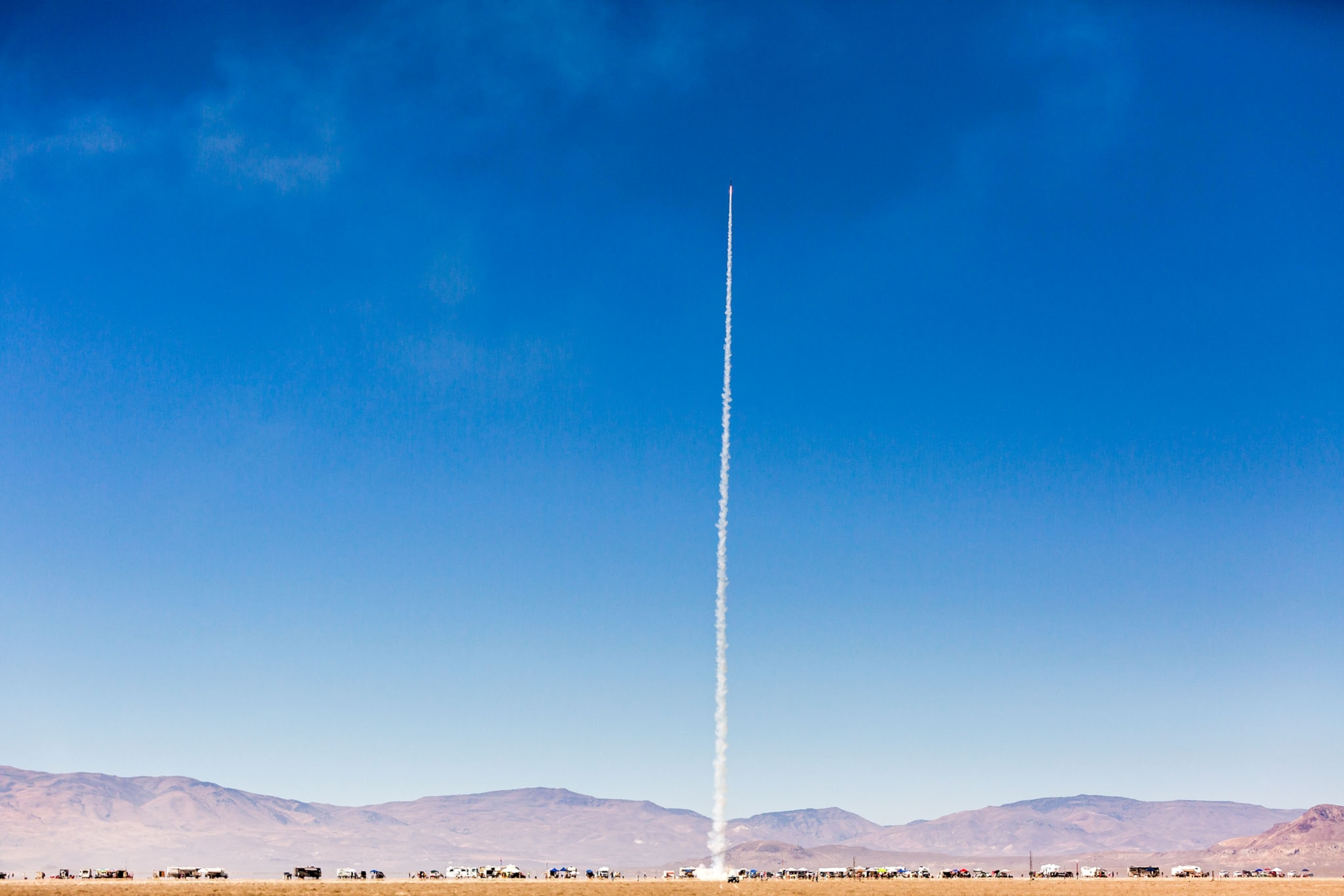
Ormerod was into astronauts and science fiction as a kid but never imagined being able to travel beyond Earth. “When only a tiny percentage of people can go to space, what does everyone else who dreams of it do?” he wondered. Then, at a rocket launch in his native Scotland, he found the answer: They live their interstellar dreams on the ground. Soon he was following scientists to a Mars simulation in Utah and aurora hunters to the otherworldly coast of Iceland. Next he’ll visit crop circle enthusiasts in Russia and astronomers in South Africa. “They’re ordinary people,” Ormerod says, “but they’re blasting into outer space.”

